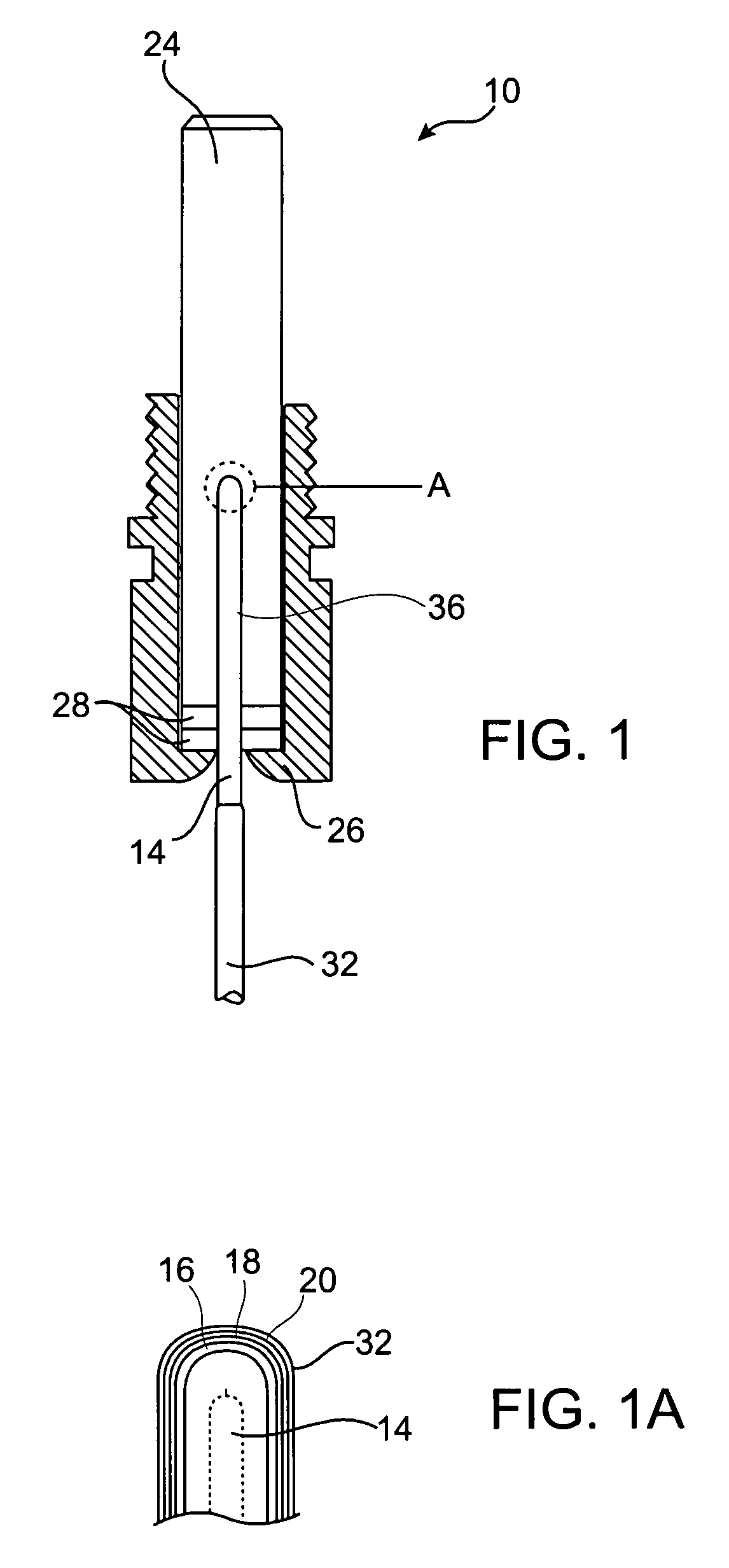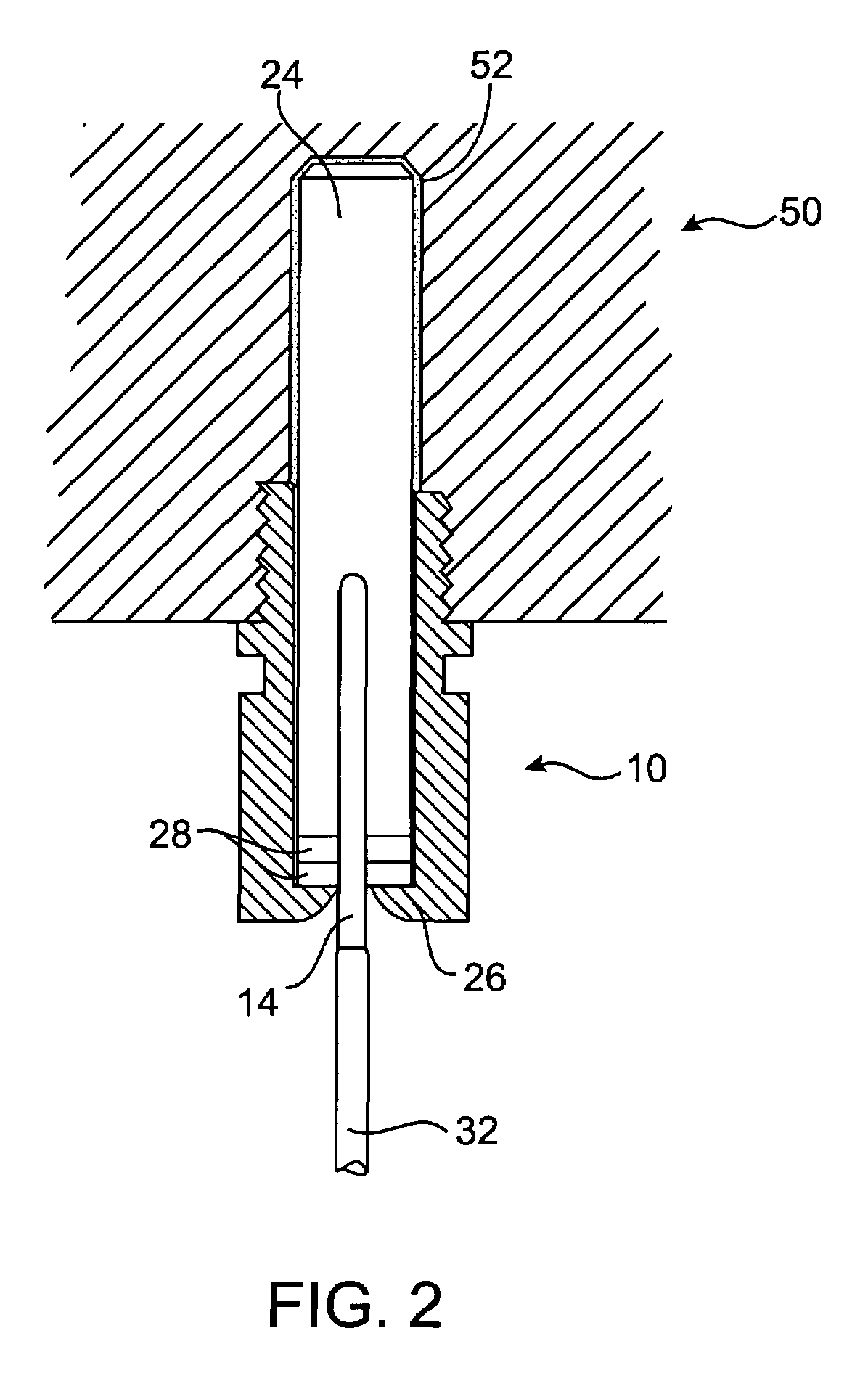Temperature sensing system for temperature measurement in a high radio frequency environment
a high-radio frequency environment and temperature sensing technology, applied in the field of temperature sensing systems, can solve the problems of non-contact temperature sensors that tend to respond more quickly to temperature changes, are more expensive, and have less accuracy differences between contact and non-contact temperature sensors
- Summary
- Abstract
- Description
- Claims
- Application Information
AI Technical Summary
Benefits of technology
Problems solved by technology
Method used
Image
Examples
Embodiment Construction
[0024]The invention relates to a temperature sensing system that measures temperatures of articles or areas using an electrical contact sensor. The temperature sensing system of the present invention is able to operate effectively and reproducibly even in a high radio frequency environment.
[0025]The temperature sensing system includes a contact sensor having an RF insulating tip. The temperature sensing system is placed in contact with an article or area for monitoring its temperature. The contact sensor with the insulating tip is useful in noisy environments to shield out external fields, such as RF electromagnetic fields and other noise, so that the contact sensor can operate more accurately and so that RF filtering requirements for down stream instrumentation are significantly reduced. The contact sensor used in the temperature sensing system of the present invention is described below as a thermocouple. However, other types of electrical contact sensors may also be used includin...
PUM
| Property | Measurement | Unit |
|---|---|---|
| length | aaaaa | aaaaa |
| frequencies | aaaaa | aaaaa |
| length | aaaaa | aaaaa |
Abstract
Description
Claims
Application Information
 Login to View More
Login to View More - R&D
- Intellectual Property
- Life Sciences
- Materials
- Tech Scout
- Unparalleled Data Quality
- Higher Quality Content
- 60% Fewer Hallucinations
Browse by: Latest US Patents, China's latest patents, Technical Efficacy Thesaurus, Application Domain, Technology Topic, Popular Technical Reports.
© 2025 PatSnap. All rights reserved.Legal|Privacy policy|Modern Slavery Act Transparency Statement|Sitemap|About US| Contact US: help@patsnap.com



